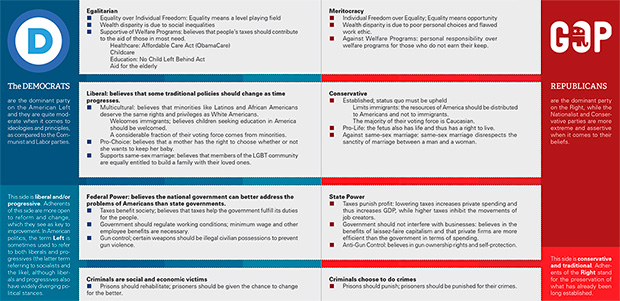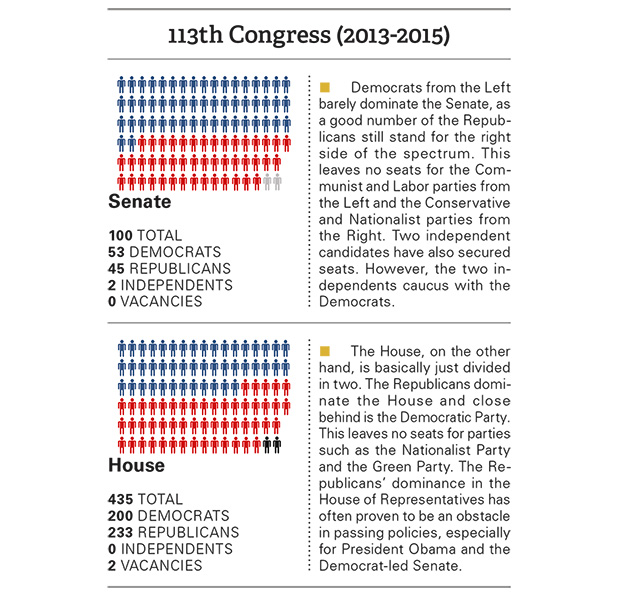WITH THE 2012 US elections ending conclusively and Obama winning a second term, the lines of division in the current administration are defined. Here is a glimpse of the beliefs and principles which make up the respective ideologies and values of parties in the American political spectrum.
While the broad categorizations and potential oversimplifications that may follow possibly ignore the complex nuances that differentiate one man’s politics from another’s, the following infographic still serves as a helpful basic outline and a reflection of current political trends.
This side is liberal and/or progressive. Adherents of this side are more open to reform and change, which they see as key to improvement. In American politics, the term Left is sometimes used to refer to both liberals and progressives (the latter term referring to socialists and the like), although liberals and progressives also have widely diverging political stances.
The Democrats are the dominant party on the American Left and they are quite moderate when it comes to ideologies and principles, as compared to the Communist and Labor parties.
The US government was designed with functions of oversight, in that each political body could keep each other’s powers in constant check and balance. With today’s Senate dominated by Democrats and the House by Republicans, the power of Congress to pass any piece of legislation is moderated by the necessity to compromise the opposing views of the two parties. Even with the victory of the Democrats in the White House, given Obama’s reelection, measures on contentious issues such as the fiscal cliff and gun control still need bipartisan support before they can be passed into law. Only through bipartisanship and compromise will laws be approved.
Sources:school.d94.org, informationisbeautiful.net/visualizations/left-vs-right-us/, infoplease.com






